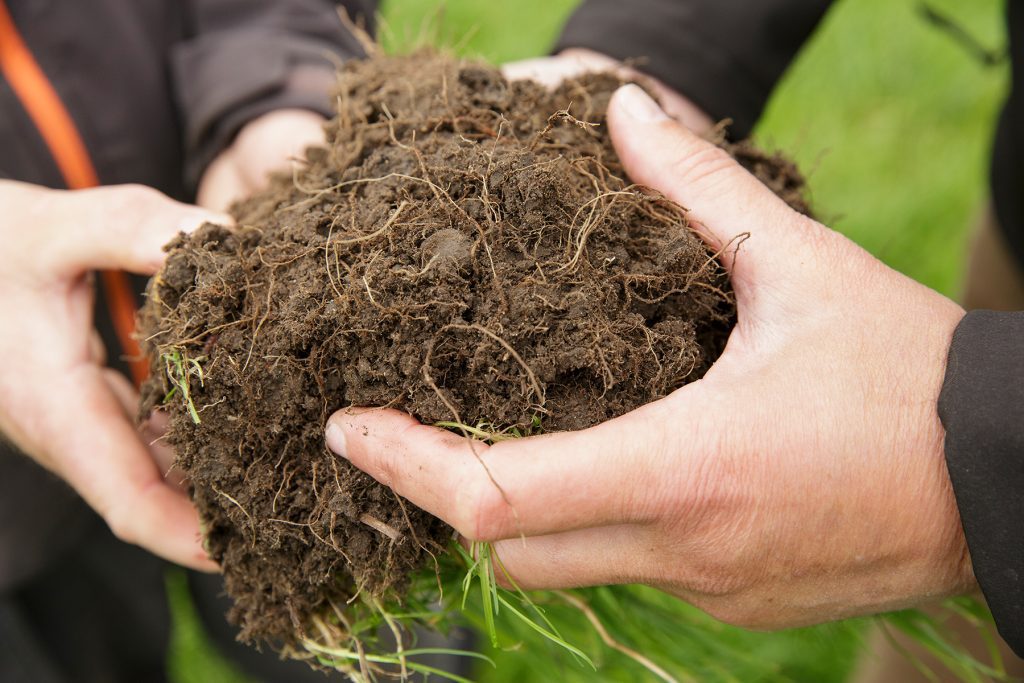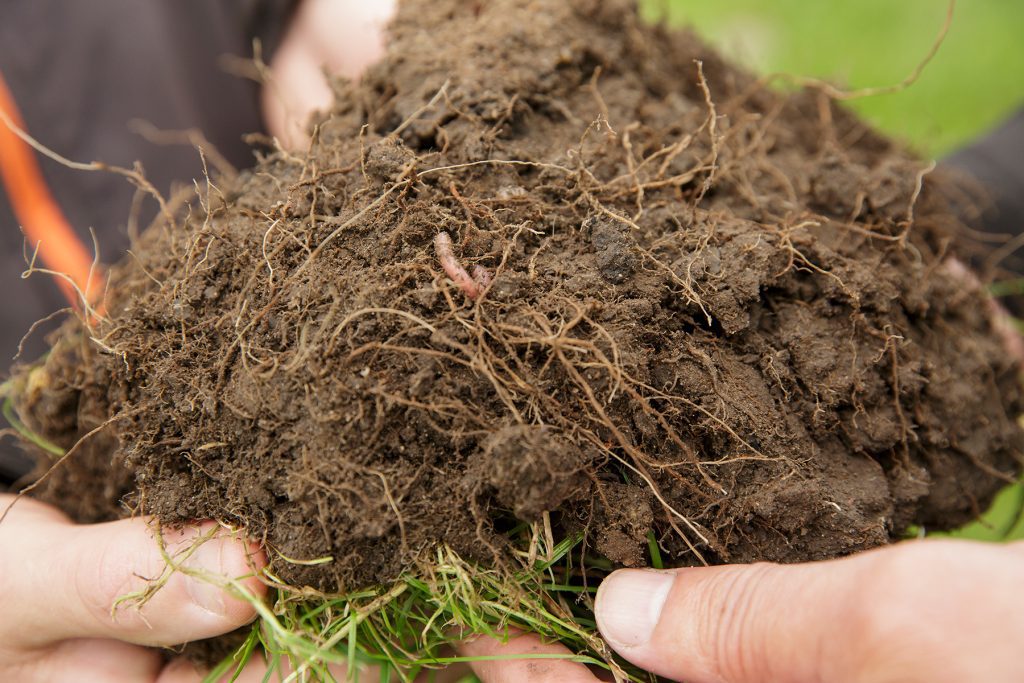Soil is a farm’s greatest asset on many levels. Looking after it is central to farm productivity and the basis of important environmental credentials. Increased crop yields, resilience to extremes of weather and more carbon sequestration are just some of the benefits seen from improving soil health.
And with government tasking farmers to reduce emissions by 25% by 2030, focusing on soil health is a great starting point in adopting more sustainable agriculture methods. This is the first of three articles in our special series on soil health.
| Important soil functions related to crop production | Economic benefits of maintaining and improving soil health |
| Retaining and recycling nutrients | Better plant growth, quality and yield |
| Sequestering carbon | Reduced fuel costs from using less fertiliser Lower input costs by decreasing losses and making more efficient use of fertiliser, pest and weed control applications |
| Allowing infiltration of water, as well as facilitating storage and filtration of water | Better field access during wet periods |
| Suppressing pests, weeds and diseases | Reduced risk of yield loss during periods of stress (e.g. heavy rain, drought, pest or disease outbreak) |
Soil assessment methods
Understanding the condition of your soil and making informed management decisions on-farm is central to realising the benefits of healthy soil. For this, the most valuable and cost-effective tool is your spade.
Many benefits can be gained by simply digging a hole when assessing soil health and judging the appearance, structural quality and feel of a block of soil dug out with a spade.
Digging soil pits is a great way to check your soil’s physical condition and can be done at any time of the year, but preferably when the soil is moist. If the soil is too dry or wet, it is difficult to obtain a representative sample – spring or autumn are usually the best times.
How to dig a soil pit
Dig into the soil to a depth of 25-30 cm
- If the soil is freshly dug or recently tilled, push the spade vertically into soil and remove a spadeful
- If the soil has a hard surface or a crop in, cut down on three sides and then lever the block out, leaving one side undisturbed
Gently open the undisturbed side of the block and start to break it up
- If the block breaks up easily into small fragments, the structure is likely to be good
- If the block is hard to break up and held together by roots, pull the roots apart to expose the soil fragments
Break up the blocks to see if there are distinct levels of differing structure
- Push your penknife into the side of the hole to assess for compaction at the top and lower down
Visual evaluation and examination of soil (VESS)
Using a series of soil pits and a visual evaluation method known as VESS, you can assess the quality of your soil structure.
To carry out a VESS, select an area of uniform crop or soil colour, or an area where you suspect there may be a problem. Within this area, plan to take multiple soil pit samples to gain a broad view of the range of soils either in this area or representative samples from across the field you are assessing.
Examine the structure of soil particles, rooting depth and colour/smell. This allows you to determine if compaction and/or drainage is an issue.
A well-structured soil has round, crumbly particles that can be easily broken up between your fingers and plant roots going down through the soil. If it appears clumped together, difficult to break apart and the roots are restricted to the top few inches, there may be a compaction problem.
Soil should also smell earthy or have little odour at all. If it smells pungent, it’s a good indication there is poor drainage or a lack of oxygen in the soil.
Soil organic matter
Soil organic matter (SOM) plays a vital role in structure, improving soil aeration, water retention and drainage. Derived from plant material, it is an important source of nutrients including phosphorus (P), potassium (K) and nitrogen (N) as well as a major store of carbon.
SOM and its nutrient levels are assessed through detailed soil testing in the lab. The recommendation is to take test samples to a depth of at least 10 cm to understand the whole soil profile. It is also good practice to take a minimum of 15 samples across a field in a “W” shape to gain a fully representative sample.
Low SOM is often an issue in long-term tillage ground which is put back into grass. Farmers find grasses underperform, stress easily and may be prone to disease for a few years so these would be areas to target when assessing SOM levels. SOM can be built up by adding organic materials in these ways:
- Use of cover crops, green manures and grass swards
- Diverse grassland species within rotations (increasing quality and quantity of grass residues incorporated into soil)
- Applications of manure
- Maintenance of good soil structure and soil porosity
Increasing the abundance of legume species in grass swards can improve carbon sequestration and forage quality, and reduce inorganic N inputs.
Physical benefits of healthy soils with good SOM
- Improved water infiltration and soil aeration, reducing runoff
- Improved water holding capacity
- Reduced stickiness of clay soils making them easier to till
- Reduced surface crusting, facilitating seedbed preparation
The importance of earthworms
Another major contributor to soil health is its biological ecosystem. To assess the biological status of soil, look no further than the earthworm. Their role in healthy soil can’t be underestimated.
Earthworms are a key indicator of soil health as they are sensitive to changes within the soil environment such as pH, waterlogging and compaction.

They help break down organic matter, mixing materials in the soil profile as well as alleviating soil compaction by developing pores and channels which help drainage, aeration and root growth. By doing this, they provide a fertile and healthy environment for the development of healthy pasture.
Counting the earthworms in your soil pits is another simple indication of soil health. Ideally, a pit should contain at least 10 earthworms, with a mixture of sizes (from small juvenile worms through to adults) and species.
Soil health underpins farm productivity and sustainability
Soil health and structure affect root penetration, water availability to plants and soil aeration, and form a critical part of forward-planning when looking ahead to spring 2023 reseeds. If you don’t have healthy soil, no amount of fertiliser or reseeding will fix it.
In the next two articles, we will look at how to make the best use of your soil, with information and tips on drawing up a soil management plan and taking remedial action on your visual findings.
Sign up for grass and forage updates
You can sign up below to receive information on soil health, grass and forage production, red clover, white clover, multi-species swards, and other grassland management topics.
